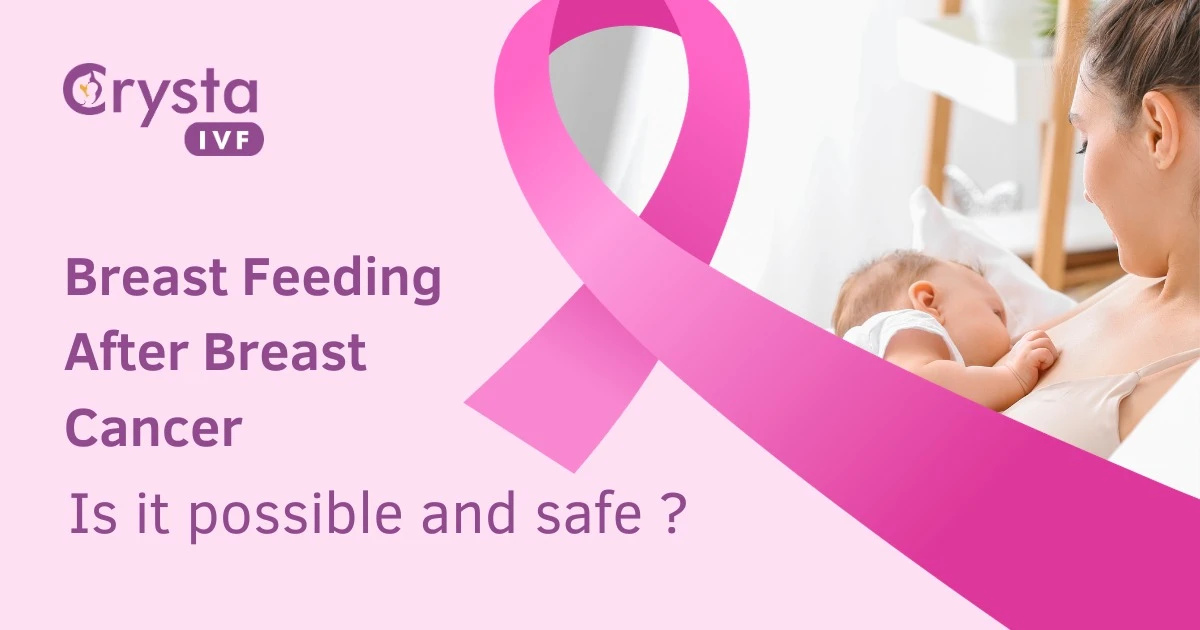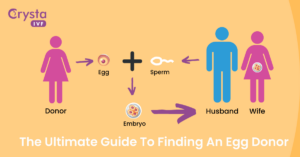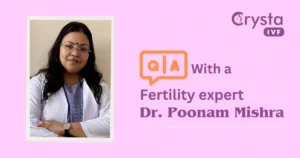Women who become pregnant after completing breast cancer treatment often assume they won’t be able to breastfeed their child. It might be true for some women who have undergone treatment, but for most of the others, it is just a myth with no scientific basis. Breastfeeding post-cancer treatment is absolutely safe for the mother and the baby as long as the mother is not on active chemotherapy treatment or taking other drugs such as tamoxifen, aromatase inhibitors, trastuzumab continuously, or any other cytotoxic or immunomodulatory drugs. The treating oncologist will guide the patient what is the safe awaiting period after chemotherapy, after which the mother can safely breastfeed the child. Feeding your baby breastmilk gives the newborn important nutrients and immunological factors, boosts their body’s immunity, and has long-term health benefits for the child. After breast cancer, breastfeeding also gives a positive boost to the patient’s emotional and psychological health and also plays a vital role in strengthening the mother-child bond.
Research data shows that women who have breastfed for 6 months or more before being diagnosed with breast cancer have a lower risk of recurrence post-treatment than women who do not breastfeed. Post-cancer treatment, breast feeding data, and its long-term benefits for the mother’s health are missing. If the mother is unable to breastfeed or chooses not to breastfeed, that’s okay. Breastfeeding can be difficult, even for women who have not been treated for breast cancer.
Mothers can still give their babies physical closeness and love while bottle-feeding. Caring for your baby is about what’s in your heart, not your breasts. If one becomes pregnant during treatment, is diagnosed during pregnancy, or has metastatic disease, one needs to consult their oncologist about how their treatment affects pregnancy and breastfeeding.
Breastfeeding after breast cancer treatment
Post-surgery
Surgery may remove milk ducts along with other breast tissue. A mastectomy removes the entire breast, so women who have a single mastectomy can only breastfeed from the remaining breast. Women who have double mastectomies will not be able to breastfeed because both breasts have been surgically removed. It’s often possible to breastfeed after a lumpectomy, which is a less radical surgery. But radiation is often given after lumpectomy, which may reduce milk flow in the breast that was treated. Even if one breast is removed or radiated, the other breast can be comfortably used by the mother to feed the child. Less radical surgeries like lumpectomy remove the tumor and a rim of healthy breast tissue around it. In many cases, breastfeeding from a breast that has had a lumpectomy can work. The breast has lobes much like oranges, where one compartment is separate from the other. They function independently of each other; they contain lobules, which are glands that produce milk. When lobes are damaged by lumpectomy or biopsy, the lobules within them might fill with milk at first but dry up over time. The undamaged lobules in that breast will still produce milk.
Breastfeeding Post-Radiation
Radiation may damage lobules. It can stop them from making milk entirely or change the appearance of breast milk. After radiation, breast milk may look thicker and darker. While there’s no evidence of the harmful effect of breast milk on the child, some women choose not to feed from the breast treated with radiation due to fear fr
Breastfeeding from one breast
Breastfeeding usually involves feeding from both breasts. Alternating breasts each time while feeding the baby helps the body maintain a good milk supply. Still, it is possible to feed a baby with only one breast. One breast can even feed two babies with proper technique.
Tips for breastfeeding after treatment
Certain small tips can be followed by the breast-feeding mother, like:
Having a good support system before starting breastfeeding Mothers need to be gentle with their breasts while handling them, and the mother should breastfeed in a stress-free environment.
As breast lobes damaged by treatment dry up, cold packs or ibuprofen can be used to ease discomfort for the patient.
A high-quality breast pump might be helpful for such patients, as it can help increase the production of breast milk.
Sometimes feeding from just one breast can make the nipple sore. Gently rub a little breast milk on the nipple to help it heal.
Setting up breastmilk banks and the concept of milk-sharing
Mothers who are unable to feed their child breast milk as a result of cancer treatment might still want their baby to be breastfed so that they can achieve all the good benefits and nutrients that breast milk provides. Nowadays, there is a concept of milk banks and milk sharing, which is widely prevalent in Western countries. Through these, we can get human breast milk that is donated by other lactating women.
Non-profit milk banks take donated breast milk from donors who are screened for good health through interviews, surveys, and blood tests. Milk from 3 to 5 women is combined and pasteurized with high heat to kill anything that may cause disease. This processing is done under sterile conditions at the milk bank.
- Donor milk is tested to make sure it is safe, free of bacteria, and has the right calories, proteins, and other nutrients for your baby’s healthy growth. Milk banks do not accept milk donors who are positive for HIV, hepatitis B or C, or other infectious diseases, or if they or their sexual partners are at risk for HIV. Milk from donors with high-risk behaviors like drug abusers or addicts is also not accepted. Other restrictions, as necessary, are also imposed.
- Most donated milk goes to premature, sick, or high-risk infants, but babies of women who are unable to breastfeed due to breast cancer treatment have also received it.
- A physician’s prescription is needed to get human milk from a milk bank.
Support for breastfeeding after breast cancer
Finding emotional and practical support will help post-cancer patients overcome breastfeeding difficulties. Lactation counselors may play a vital role in the first days and weeks of breastfeeding. Counselors who have had experience with women with breast surgery or radiation can be more fruitful. Talk and discuss with your spouse or partner, close family, and friends who support breastfeeding.
BREASTFEEDING AFTER BREAST CANCER IS NOT A MYTH BUT A REALITY. A MOTHER’S MILK CAN DO NO HARM TO HER CHILD IF GOOD FEEDING PRACTICES ARE FOLLOWED.






